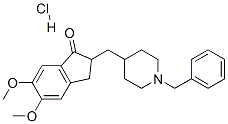Propiverine hydrochloride
Synonym(s):α,α-Diphenyl-α-propoxyacetic acid hydrochloride 1-methyl-4-piperidyl ester;α-Phenyl-α-propoxybenzeneacetic acid 1-methyl-4-piperidinyl ester hydrochloride;(1-Methylpiperidin-1-ium-4-yl) 2,2-diphenyl-2-propoxyacetate chloride;1-Methyl-4-piperidyl diphenylpropoxyacetate hydrochloride
- CAS NO.:54556-98-8
- Empirical Formula: C23H30ClNO3
- Molecular Weight: 403.94
- MDL number: MFCD01672343
- SAFETY DATA SHEET (SDS)
- Update Date: 2024-11-20 15:18:15

What is Propiverine hydrochloride?
Description
Propiverine hydrochloride is a new urological agent developed for pollakuria and aconuresis. It appears to exhibit anticholinergic properties and in animal experiments inhibited KCl induced contractions in the bladder and ileum.
Chemical properties
Off-White Solid
Originator
Apogepha (Germany)
The Uses of Propiverine hydrochloride
Propiverine is used in treatment of urinary incontinence. Propiverine is an anticholinergic.
What are the applications of Application
Propiverine, Hydrochloride is used for treatment of urinary incontinence
Definition
ChEBI: Propiverine hydrochloride is a diarylmethane.
brand name
Mictonorm; Mictonetten
General Description
Propiverine hydrochloride drug is a tertiary amine with spasmolytic and analgesic properties. This drug exerts neurotropic and musculotropic effects on the urinary bladder and smooth muscles. Propiverine hydrochloride has a half-life of 20 hours.
Biochem/physiol Actions
Propiverine is an antimuscarinic drug used for the treatment of overactive blaqdder and urinary incontinence. Propiverine and/or its metabolites also have calcium channel blocking properties in addition to antimuscarinic activity, which may contribute to the clinical activity.
Clinical Use
Treatment of urinary frequency, urgency and
incontinence
Neurogenic bladder instability
Drug interactions
Potentially hazardous interactions with other drugs
Anti-arrhythmics: increased risk of antimuscarinic
side effects with disopyramide.
Metabolism
Propiverine is extensively metabolised by intestinal and
hepatic enzymes. Four metabolites were identified in
urine; two of them are pharmacologically active and may
contribute to the therapeutic efficacy.
Propiverine and its metabolites are excreted in the urine,
bile and faeces.
Properties of Propiverine hydrochloride
| Melting point: | 224-226°C |
| storage temp. | 2-8°C |
| solubility | H2O: soluble5mg/mL, clear (warmed) |
| form | powder |
| color | white to beige |
| CAS DataBase Reference | 54556-98-8(CAS DataBase Reference) |
Safety information for Propiverine hydrochloride
| Signal word | Danger |
| Pictogram(s) |
 Corrosion Corrosives GHS05  Exclamation Mark Irritant GHS07 |
| GHS Hazard Statements |
H315:Skin corrosion/irritation H318:Serious eye damage/eye irritation H335:Specific target organ toxicity, single exposure;Respiratory tract irritation |
| Precautionary Statement Codes |
P280:Wear protective gloves/protective clothing/eye protection/face protection. P302+P352:IF ON SKIN: wash with plenty of soap and water. |
Computed Descriptors for Propiverine hydrochloride
Propiverine hydrochloride manufacturer
Centaur Pharmaceuticals Pvt Ltd
Ralington Pharma
New Products
Tert-butyl bis(2-chloroethyl)carbamate (S)-3-Aminobutanenitrile hydrochloride N-Boc-D-alaninol N-BOC-D/L-ALANINOL N-octanoyl benzotriazole 4-Hydrazinobenzoic acid 3,4-Dibenzyloxybenzaldehyde 1,1’-CARBONYLDIIMIDAZOLE R-2-BENZYLOXY PROPIONIC ACID 1,1’-CARBONYLDI (1,2-4 TRIAZOLE) 4-HYDROXY BENZYL ALCOHOL 3-NITRO-2-METHYL ANILINE (2-Hydroxyphenyl)acetonitrile 4-Bromopyrazole 5-BROMO-2CYANO PYRIDINE 5,6-Dimethoxyindanone 5-broMo-2-chloro-N-cyclopentylpyriMidin-4-aMine 4-methoxy-3,5-dinitropyridine 2-(Cyanocyclohexyl)acetic acid 2-aminopropyl benzoate hydrochloride 1-(4-(aminomethyl)benzyl)urea hydrochloride tert-butyl 4- (ureidomethyl)benzylcarbamate diethyl 2-(2-((tertbutoxycarbonyl)amino) ethyl)malonate Ethyl-2-chloro((4-methoxyphenyl)hydrazono)acetateRelated products of tetrahydrofuran








You may like
-
 54556-98-8 Propiverine hydrochloride 98%View Details
54556-98-8 Propiverine hydrochloride 98%View Details
54556-98-8 -
 54556-98-8 99%View Details
54556-98-8 99%View Details
54556-98-8 -
 Propiverine hydrochloride 98%View Details
Propiverine hydrochloride 98%View Details
54556-98-8 -
 Propiverine hydrochloride CAS 54556-98-8View Details
Propiverine hydrochloride CAS 54556-98-8View Details
54556-98-8 -
 N-Vinylformamide 99%View Details
N-Vinylformamide 99%View Details
13162-05-5 -
 Chloro Uracil 1820-81-1 99%View Details
Chloro Uracil 1820-81-1 99%View Details
1820-81-1 -
 2-ethyl-6-methyl-3-hydroxypyridine succinate 99%View Details
2-ethyl-6-methyl-3-hydroxypyridine succinate 99%View Details
127464-43-1 -
 2-ETHYLPYRIDINE 100-71-0 99%View Details
2-ETHYLPYRIDINE 100-71-0 99%View Details
100-71-0